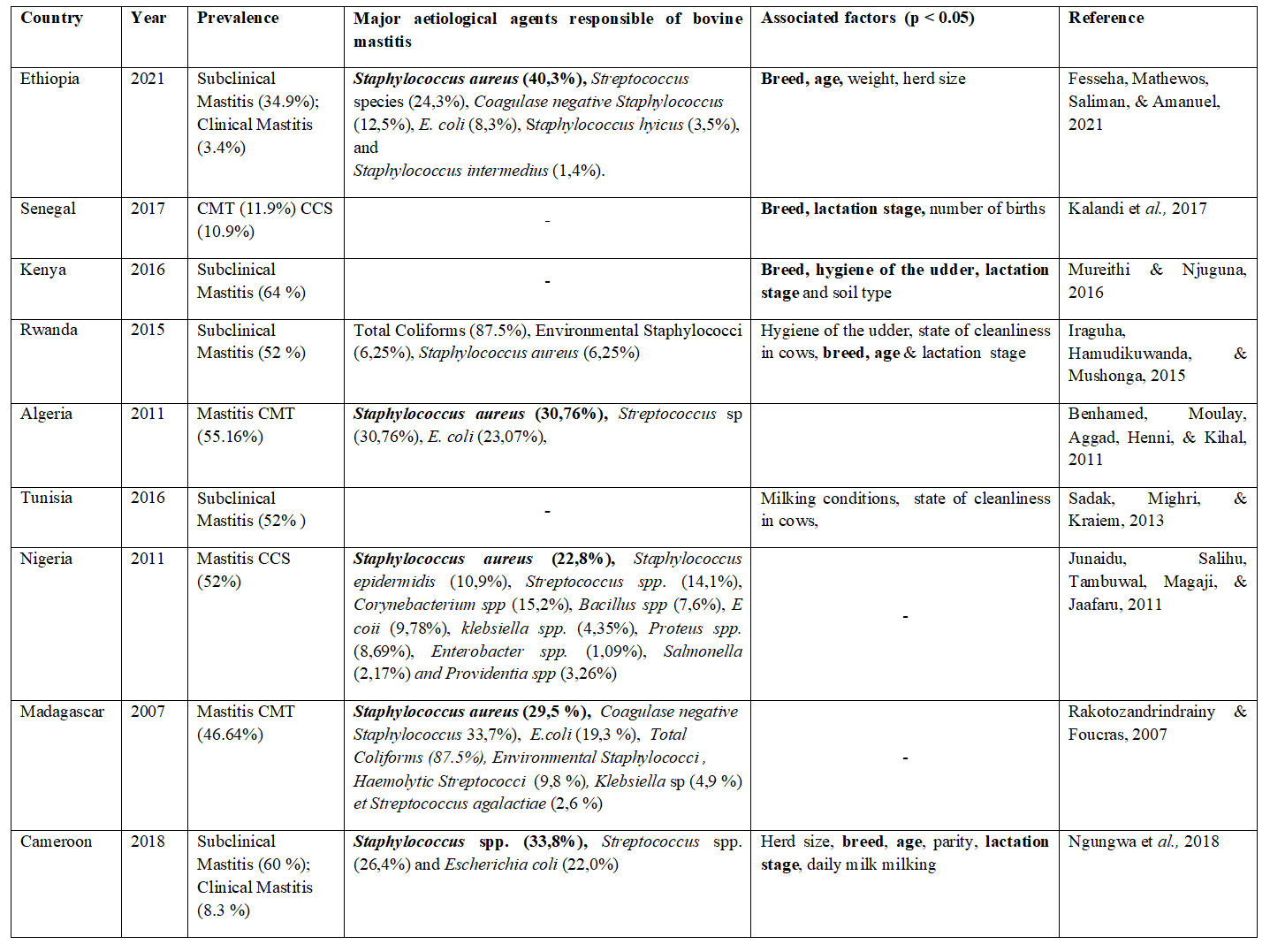Bibliographic Synthesis on the Influence of Cow Mastitis on Fresh Milk Quality
Clinical Medicine And Health Research Journal,
Vol. 3 No. 3 (2023),
23 June 2023
,
Page 438-443
https://doi.org/10.18535/cmhrj.v3i3.193
Abstract
Mastitis in lactating cows lead to a decrease in the overall cow production; make milk unfit for human and calf consumption; deteriorate milk quality. However, data are not updated on the influence of mastitis on the physicochemical and microbiological quality of milk. Therefore, the present review was made to highlight the current state of knowledge on prior research on the impact of mastitis on milk quality, and to identify the shortcomings of these studies. Two themes were addressed to achieve this. We started by reviewing the prevalence, aetiology and factors associated with the occurrence of mastitis in the African continent. Then, we compared the variation of chemical components of mastitis milk in several studies. Our analysis shows that subclinical mastitis is predominant in Africa, with most prevalence higher than 50%. The majority of authors (83.33%) claimed that Staphylococci are the main cause of mastitis. The breed (83.33%) and lactation stage (66.66%) were the two most cited factors contributing to the occurrence of mastitis. Data collected on the chemical components of mastitis milk came mostly from studies prior to the year 2000. Several contrary opinions (increase/decrease/no variation) were stated by authors on the variation of chemical components of mastitic milk, specifically on fat, lactose and crude protein contents. Overall, it is challenging, if not impossible, to draw a definitive conclusion about the influence of mastitis on the chemical composition of milk for most chemical parameters, because the data examined in relation to the chemical components of milk with mastitis seem rather inconsistent.
- Bovine mastitis, prevalence, aetiology, associated factors, cow milk quality

How to Cite
Download Citation
References
- Article Viewed: 0 Total Download


